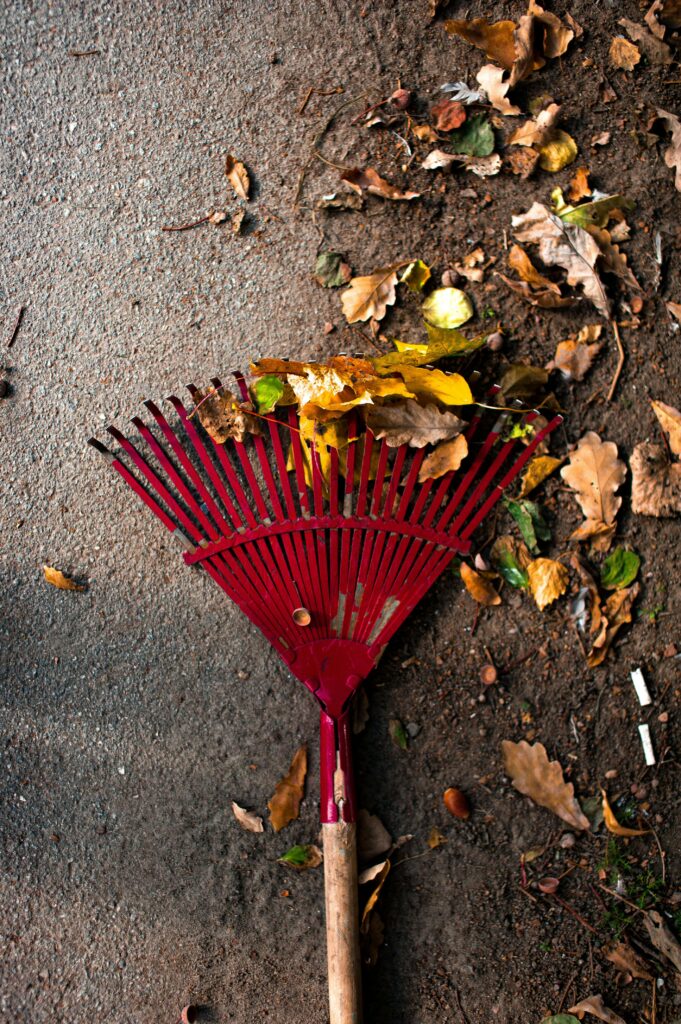Color, Mulch, Cut Back, or Not
By Kim Cantrell, Little Bird Gardens
I hope you’ve been soaking in the rich hues of autumn! I mean, how could you miss them! Fall has arrived in full force this year, showcasing the most spectacular display of deep reds and brilliant golds, blended with rich oranges.
I was especially pleased that my Katsura tree finally had its best year yet, filling the morning air with that wonderful burnt-sugar fragrance and displaying vibrant golden leaves that really popped against the deep green of the Douglas firs. It was the first tree I planted on this property, and though it initially struggled those first years, a generous layer of mulch this spring has made a remarkable difference.
Other trees like the bigleaf maples in my woods are slow to get their fall color, as is the serviceberry, with just a hint of red beginning to show. A few more cold nights and they’ll be at their autumnal peak. I love that we have really been able to enjoy the leafy show this fall for such an extended period of time.
I’d like to have more year-round interest around my property and recently added a Quercus coccinea (Scarlet Oak), an Arctostaphylos (Manzanita “Ghostly”), and one of our native beauties, Ceanothus velutinus (Snowbrush). Fall is the perfect time to plant trees, shrubs, and even some perennials. Why, you ask? Because as trees and shrubs go dormant, they focus energy on root development. Cooler temperatures reduce the need for frequent watering, which also minimizes transplant stress. However, you’ll still want to water newly planted specimens daily for the first week, gradually tapering off over the following weeks. Despite recent rains, our soil is still quite dry at depth, but also check moisture levels before watering to avoid overwatering.
A few quick tips for planting trees and shrubs: Dig your hole only as deep as the root ball to prevent settling. Look out for roots circling the trunk; spread them out or cut them, if needed, to prevent girdling as the tree matures. Once the tree is planted, mulch around it with arborist chips, creating a two-foot-wide ring around the trunk at a depth of 4-6 inches. Avoid burying the trunk itself, then water well.
Once you have that tree or shrub planted, the next most important step is mulching. Mulching around trees, shrubs, and other garden plants helps retain moisture (a key factor in my Katsura’s success), keeps roots cool in the summer, and insulates them in winter. It also suppresses weeds and can help decrease soil erosion. I prefer arborist chips because they allow water to penetrate easily, break down slowly over time, and enrich the soil as they decompose, eliminating the need for additional fertilizers. Medium bark can also be an option for mulching trees and shrubs.
What else can you do this season? It’s time to start cutting back perennials, though I recommend trimming those with pithy stems only back to about 12-14 inches. The hollow stems you leave by not cutting them back all the way will offer winter shelter for solitary bees, like the mason and leaf-cutter bees. Other insects will use them too, for winter hibernation. If this look isn’t for you, consider laying the cut stems horizontally in an out-of-the-way spot for insect nesting.
When it comes to cutting back grasses, leave them standing for winter interest, then cut them back in spring. Evergreen grasses generally don’t need a spring trim, but it’s a good idea to check on the specific needs of your plants. And if you don’t get around to cutting back all your perennials, that’s fine! Freshen them up when new growth appears in spring. Some perennials, like Echinacea (coneflower), Symphyotrichum (aster), and Solidago (goldenrod), to name just a few, have seed heads that provide excellent food for birds, so you can leave them until spring.
Got leaves? Leave them! They make fantastic, free mulch for garden beds. You can chop them up with a mower or use them whole; I’ve been adding whole leaves to my beds for years, and I love how they suppress spring weeds, leaving me time to do other gardening tasks. Alternatively, compost the leaves in a designated area, and after a year or two you’ll have rich leaf mold to spread on your beds like compost. If you rake up leaves off your lawn, add them to your beds, too.
So get out and enjoy your garden this fall! Whether you do a little or a lot, spending time outside in the fresh air with your hands in the soil is as good for you as it is for your garden, and we all need that!
For an in-depth guide for planting trees and shrubs, visit: https://pubs.extension.wsu.edu/planting-trees-and-shrubs-in-the-landscape-home-garden-series

